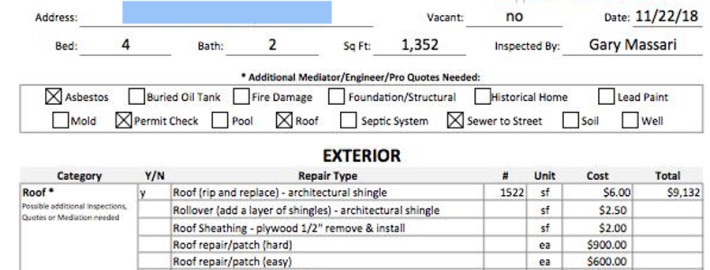Building the Future with FINANCE OF AMERICA COMMERCIAL
Constrained housing supply has been a theme for much of the past year, with land and labor shortages, expensive lumber and tight financing options all contributing to what has been a challenging year for both builders and buyers. Finance of America Commercials new construction product could be starting to change that.

Launched in February 2017, the product is available in all major markets to new and seasoned real estate investors who have experience building or who have partnered with builders to capture value in markets with a lack of new construction supply. Eligible brokers can also refer this product to their clients.
‘The real estate market recovery of prices and apparent lack of available housing supply improved the margins available for new construction properties. Both large renovation and new construction projects quickly evolved as additional opportunities for investors…’
~Andrew Hurd, VP of Credit (Finance of America Commercial)
New Construction Financing Fills a Gap
When asked about the development of this new financing option for investors and builders, Finance of America Commercial VP of Credit Andrew Hurd said that the company took notice of new construction demand continuing to outstrip supply in all major markets over the past year. This trend, coupled with feedback from many of the firm’s clients that they were feeling the pressure of declining inventory but still seeking growth opportunities, spurred creation of this product.
“The company saw a need in the market,” Hurd said. “After a decrease in foreclosure inventory previously sought after by institutional investors and local long-term hold and fix-and-flip operators, investors turned to new ways to achieve yields in their markets. The real estate market recovery of prices and apparent lack of available housing supply improved the margins available for new construction properties. Both large renovation and new construction projects quickly evolved as additional opportunities for investors, so we saw an opening to help our clients overcome a challenging market dynamic with new financing options.”
As part of the new construction loan program, the company offers loans from $150,000 to $2.5MM for the construction of non-owner occupied single-family residences, two- to four-family units, townhomes, and multi-family properties up to 20 units.
Additional features of the program include:
- Lines of credit for multiple transactions and single loans for new investors
- Funding up to 75% of land value, 95% of construction budget, 75% After Repair LTV
- 12 month terms, with optional 3 month extensions
- Rates from 6.99%
Despite being available for less than a year, Hurd said that investors and builders have been flocking to this new option.
“Clients using this product enjoy the simplicity of financing which allows for proceeds on land acquisition, including up to 95% financing for construction costs. This financing is supporting construction projects from the West Coast to Key West for builders working on starter homes from the $100s up to luxury builds over $5 million. We’re seeing this product fit a range of needs and project sizes and our borrowers have been vocal that this is filling a gap.”
Finance of America Commercial brokers are echoing Hurd’s sentiment.
“My client was looking for financing for a groundup build as well as the ability to purchase more investment properties,” said Ralph Taylor III, a broker in Irvine, CA. “The ability to turn the line multiple times and the flexibility of the qualifying threshold was exactly what he needed to continue building his real estate investment business.”
Finance of America is the Partner for the Builder Community
FACo’s new construction program sits alongside additional builder financing options from the Renovation and Construction Lending group within Finance of America Mortgage, another of Finance of America’s lending channels.
Options available from the Renovation and Construction Lending group include construction to perm financing and the FHA 203k program, which are both available to borrowers who intend to occupy the home after construction or renovation.
“With loan products available for homebuyers, builders and real estate investors, Finance of America has quickly established itself as a key partner for the builder community,” said William Brown, director of the Renovation and Construction Lending group at Finance of America Mortgage.
New Opportunities Emerge
While financing for builders and investors is getting a bit easier to come by, FACo’s Hurd thinks there are still opportunities to create new forms of financing.
“The market for build-to-rent is gaining traction,” Hurd said. “Investors are looking to build new construction rentals without the hassle of repairs and while capturing higher rents with new condition properties.”
Hurd said this push is informing the company’s latest development, a product designed for build- and flip-torent investors, which is due in early 2018.






 The moment a lead that you reached out to contacts you, pay very close attention to what that person wants. If the lead in question just wants to ask what it is that you do, that’s good enough. Even if that lead is not ready to be converted into a customer, the fact that he or she has reached out to your business means that what you are offering in the way of services has caught the lead’s attention. You should double down, and nurture that lead until you can get what you want.That is a very good quality lead.
The moment a lead that you reached out to contacts you, pay very close attention to what that person wants. If the lead in question just wants to ask what it is that you do, that’s good enough. Even if that lead is not ready to be converted into a customer, the fact that he or she has reached out to your business means that what you are offering in the way of services has caught the lead’s attention. You should double down, and nurture that lead until you can get what you want.That is a very good quality lead.




 The new rules change how the IRS can audit an LLC or LP. In the past, an IRS audit of an LLC or LP taxed as a partnership involved auditing, settling and collecting tax shortfalls from each individual partner. In a master limited partnership (think oil and gas or real estate) with thousands of partners, this was very difficult.
The new rules change how the IRS can audit an LLC or LP. In the past, an IRS audit of an LLC or LP taxed as a partnership involved auditing, settling and collecting tax shortfalls from each individual partner. In a master limited partnership (think oil and gas or real estate) with thousands of partners, this was very difficult. As a service to our clients, we are charging just $295 for an amended and restated document. We will also include meeting minutes in which all partners approve of the new rules. It is your responsibility to make sure everyone signs the new agreement.
As a service to our clients, we are charging just $295 for an amended and restated document. We will also include meeting minutes in which all partners approve of the new rules. It is your responsibility to make sure everyone signs the new agreement.





 A critical way to control the tenant density environment, improve service to tenants, and reduce costs is to have full time on-site property management and maintenance.
A critical way to control the tenant density environment, improve service to tenants, and reduce costs is to have full time on-site property management and maintenance.

